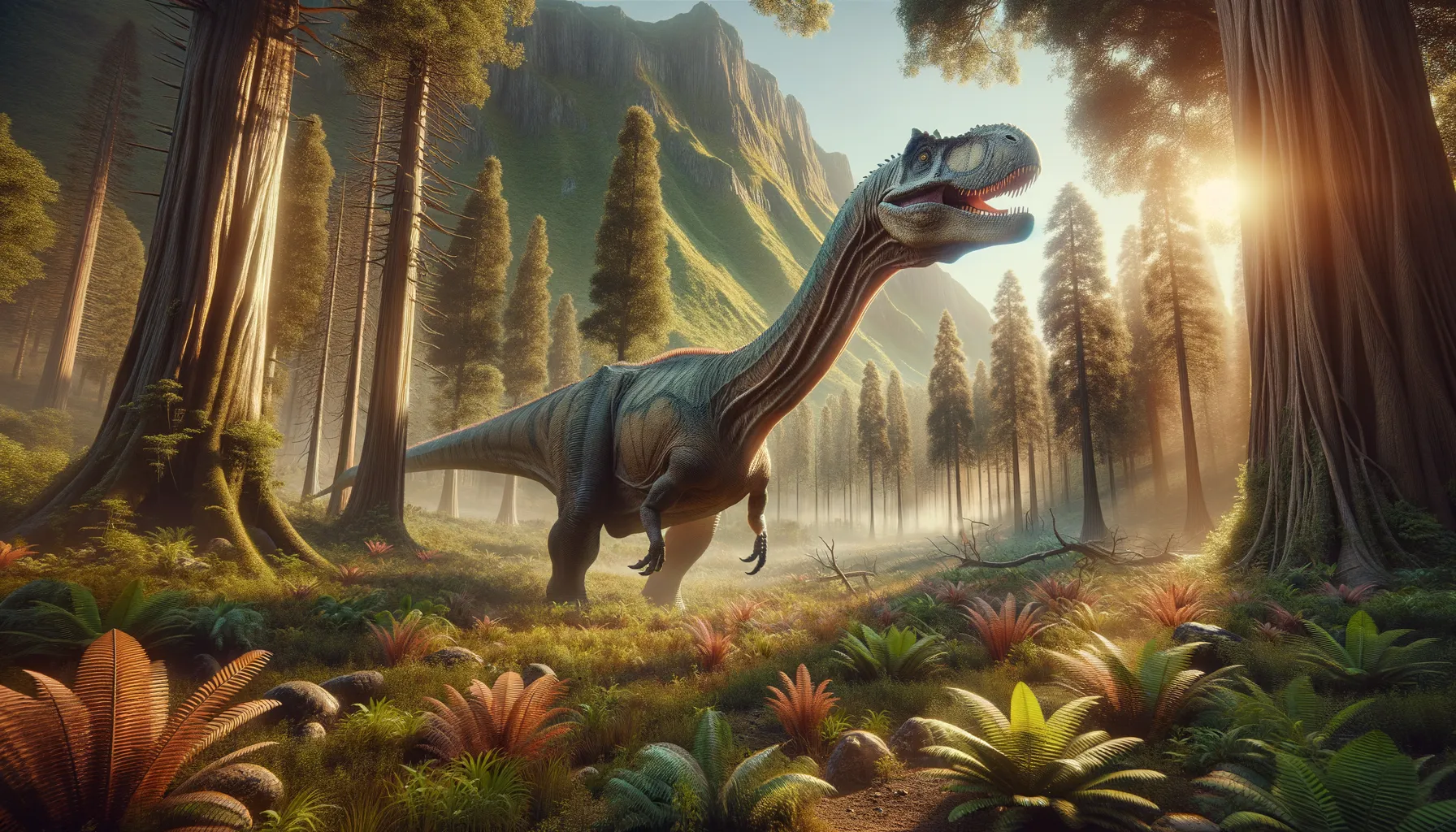
Megacervixosaurus
Majestic giant of ancient vegetation.
Period
Cretaceous
Length
Roughly 40 feet from head to tail.
Height
Approximately 10 feet at the shoulder.
Weight
Around 20 tons.
Megacervixosaurus was a massive herbivorous dinosaur that roamed the Cretaceous landscapes. Known for its long neck and immense size, it likely used its height advantage to reach vegetation unavailable to smaller creatures. Though not the fastest, its stature would have deterred most predators. It played a crucial role in its ecosystem, contributing to vegetation management and serving as a vital part of the food chain.
Diet
Megacervixosaurus was a herbivore, feeding primarily on high-growing vegetation. Its long neck allowed it to reach leaves and branches inaccessible to many other plant-eaters.
Hunting
As a herbivore, it did not hunt for prey. Its primary focus was foraging for plants, which it consumed in large quantities to sustain its massive body.
Environmental challenges
Megacervixosaurus faced environmental challenges such as climate fluctuations and habitat changes that affected food availability. Competition with other herbivores for resources could have posed a survival challenge. Predators, though rare due to its size, would have targeted younger or weaker individuals.
Speed
Moderate pace, suitable for heavy herbivores.
Lifespan
Estimated up to 70 years in the wild.
First discovery
Unearthed in the late 20th century in Asia.
Fun Facts
- Megacervixosaurus is known for its impressively long neck, which makes it similar to the giraffe of the dinosaur world.
- It lived during the Late Cretaceous period, about 80 million years ago.
- Despite its long neck, Megacervixosaurus was adapted to a terrestrial lifestyle, likely feeding on plants close to the ground.
- Fossils of Megacervixosaurus have mostly been found in Asia, particularly in regions that are now part of China.
- This dinosaur's name, Megacervixosaurus, means 'large-necked lizard,' highlighting its most distinct feature.
- Though not the largest dinosaur, its unique neck structure has fascinated scientists investigating dinosaur biomechanics.
- Megacervixosaurus coexisted with other famous dinosaurs, such as Velociraptors and Protoceratops, adding to the diverse ecosystem of its time.
Growth and Development
Growth for Megacervixosaurus was a slow process, requiring several years to reach full size. The juveniles likely formed groups for protection, gradually becoming more independent. As it matured, its neck grew longer, allowing it to access a wider range of food sources to sustain its expanding size.
Habitat
Megacervixosaurus thrived in lush, forested environments with abundant plant life. Its habitat provided ample foliage to sustain it, while rivers and streams were likely nearby as water sources. The varied terrain, ranging from dense forests to open plains, supported its foraging lifestyle.
Interaction with other species
As a massive herbivore, Megacervixosaurus interacted mainly with other plant-eaters and potential predators. Its size likely discouraged most carnivores, but smaller herbivores might have followed it to access leftover vegetation. Mutualistic relationships, such as those with smaller animals cleaning pests from its body, could have been possible.
Natural lifespan
It could live up to 70 years in suitable conditions.
Reproduction
Like many dinosaurs, it is believed to have laid eggs, with nests possibly built in safer, secluded areas. Parental care might have been limited, though group living could provide some protection for the young. Hatchlings were likely vulnerable to predators until they grew larger.
Social behaviour
Megacervixosaurus might have lived in small groups or loosely associated herds, offering protection and facilitating reproduction. Social interactions would have included mating displays and potentially cooperative behaviors to fend off predators or navigate through their environment.
Fossil locations
Fossil remains of Megacervixosaurus have been primarily found in Asia, providing insights into its distribution and environmental preferences during the Cretaceous period. The sites reveal abundant plant life, aligning with its herbivorous diet and habitat needs.
